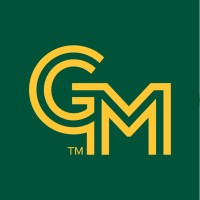Company Cyber Security Posture
NANA
NA Company Details
NA
NA
NA
NA
NA
NA
Scan still pending
NA
NA
Between 200 and 800
This score is AI-generated and less favored by cyber insurers, who prefer the TPRM score.
 NA Global Score
NA Global Score.png)

Company Scoring based on AI Models
| Model Name | Date | Description | Current Score Difference | Score |
|---|---|---|---|---|
| AVERAGE-Industry | 03-12-2025 | This score represents the average cybersecurity rating of companies already scanned within the same industry. It provides a benchmark to compare an individual company's security posture against its industry peers. | N/A | Between 200 and 800 |
Company Cyber Security News & History
| Entity | Type | Severity | Impact | Seen | Url ID | Details | View |
|---|
Company Subsidiaries

NA
Access Data Using Our API

Get company history
.png)
NA Cyber Security News
Greybox Solutions Deploys TakeCare(TM) Digital Health Platform in Quebec-Secured by Quantum eMotion's Advanced Cybersecurity Technology
Together, Greybox and QeM are shaping the future of digital healthcare-combining clinical excellence, system innovation, and quantum-safe security to deliver ...
The Top 10 Best Colleges in Canada for Tech Enthusiasts in 2025
In 2025, Canada's top tech colleges offer dynamic programs with starting salaries from $65,000 to $80,000 and contribute CAD $95 billion to ...
Tuesday, April 8, 2025
This two-day hybrid conference is free for University of Waterloo staff and will be experienced in the following formats.
Flare raises $42.5-million CAD Series B to go global with cyber threat detection tech
Flare says its software automates digital threat monitoring by trawling the open internet and the dark web for cybercrime, like the theft of ...
AI Model Achieve 98% Accuracy in Collecting Threat Intelligence From Dark Web Forums
Collecting Threat Intelligence Using Large Language Model · New C4 Bomb Attack Bypasses Chrome's AppBound Cookie Encryption · Blind Eagle ...
Launch of the Multidisciplinary Institute for Cybersecurity and Cyber Resilience (IMC2)
Polytechnique Montréal, Université de Montréal and HEC Montréal are combining forces to create the Multidisciplinary Institute for ...
Bolstering Quebec’s cybersecurity ecosystem with the Multidisciplinary Institute for Cybersecurity and Cyber Resilience
Cybersecurity concerns have never been more pressing. Organizations of all sizes are grappling with sophisticated threats and cyber ...
Québec: A True Cybersecurity Hub
Cybersecurity challenges are intensifying, and providing organizations with digital protection is becoming more crucial than ever.
Portrait of a researcher
With its roots in Montreal and its eyes on the international horizon, the Université de Montréal is one of the world's leading research universities. 2900, boul ...

NA Similar Companies

Georgia State University
Georgia State is an urban public research university and national model for student success in Atlanta, the cultural and economic center of the Southeast. The largest university in the state and one of the largest in the nation, Georgia State provides its faculty and more than 51,000 students with u

Abou Beker Belkaid University of TLEMCEN
Créée par décret N° 89-138 du 01 Août 1989 modifié et complété par le décret exécutif N° 95-205 du 05 Août 1995, puis modifié par le décret exécutif N° 98-391 du 02 décembre 1998 l’Université Aboubekr Belkaid de Tlemcen est le fruit d’une longue évolution. L’enseignement supérieur a d’abord été ass

George Mason University
George Mason University is Virginia’s largest and most diverse public research university. Located near Washington, D.C., Mason enrolls more than 40,000 students from 130 countries and 50 states, and has a residential population of more than 6,000 students. Mason has grown rapidly over the past half

University of Toronto
Founded in 1827, the University of Toronto is Canada’s top university with a long history of challenging the impossible and transforming society through the ingenuity and resolve of our faculty, students, alumni, and supporters. We are proud to be one of the world’s top research-intensive univers

Auburn University
Auburn University is a comprehensive land, space and sea grant research institution blending arts and applied sciences. The university continuously changes to accommodate today's needs, while still respecting the traditions and spirit of Auburn. As we grow and change, Auburn will always continue its

University of Louisville
The University of Louisville is a state supported research university located in Kentucky's largest metropolitan area. It was a municipally supported public institution for many decades prior to joining the university system in 1970. The University has three campuses. The 287-acre Belknap Campus is

Frequently Asked Questions
Explore insights on cybersecurity incidents, risk posture, and Rankiteo's assessments.
NA CyberSecurity History Information
How many cyber incidents has NA faced?
Total Incidents: According to Rankiteo, NA has faced 0 incidents in the past.
What types of cybersecurity incidents have occurred at NA?
Incident Types: The types of cybersecurity incidents that have occurred include .
Additional Questions
What Do We Measure?
















Every week, Rankiteo analyzes billions of signals to give organizations a sharper, faster view of emerging risks. With deeper, more actionable intelligence at their fingertips, security teams can outpace threat actors, respond instantly to Zero-Day attacks, and dramatically shrink their risk exposure window.
These are some of the factors we use to calculate the overall score:
Identify exposed access points, detect misconfigured SSL certificates, and uncover vulnerabilities across the network infrastructure.
Gain visibility into the software components used within an organization to detect vulnerabilities, manage risk, and ensure supply chain security.
Monitor and manage all IT assets and their configurations to ensure accurate, real-time visibility across the company's technology environment.
Leverage real-time insights on active threats, malware campaigns, and emerging vulnerabilities to proactively defend against evolving cyberattacks.




